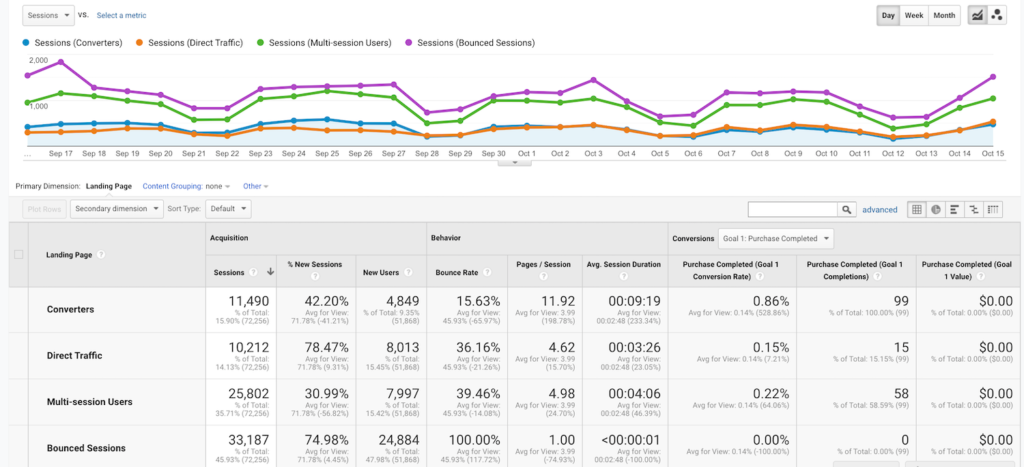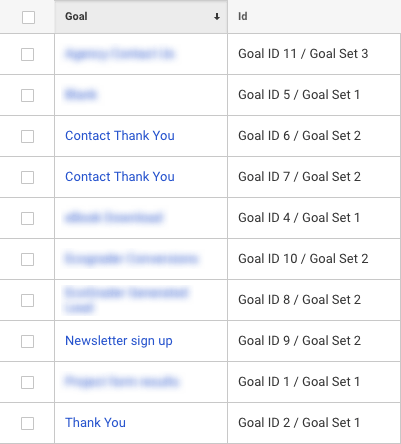What Data Is Google Analytics Goals Unable to Track and Why
What Data Is Google Analytics Goals Unable to Track and Why
Blog Article
Discover the Limitations of Google Analytics Goals: Introducing the Data Types That Remain Untrackable
As companies significantly count on data-driven decision-making, understanding the constraints of tools like Google Analytics comes to be paramount. While Google Analytics Goals offer beneficial insights into individual communications, there exist data types that elude tracking, posing difficulties to a thorough understanding of individual actions.
Insufficient User Journey Tracking
Incomplete individual trip monitoring within Google Analytics can prevent the ability to accurately evaluate customer behavior. When the user journey is not fully tracked, there are voids in the information that prevent an extensive understanding of just how users interact with an internet site. This absence of insight can cause missed chances for optimization and enhancements to the individual experience.
One usual concern with insufficient individual journey monitoring is the inability to see the complete course that users take previously completing an objective or leaving the website. Without this info, it is challenging to identify where users may be experiencing challenges or friction factors that avoid them from converting. In addition, insufficient tracking can cover the impact of specific marketing efforts or website modifications on individual behavior.
To resolve this restriction, it is vital to establish proper monitoring devices within Google Analytics to catch the entire customer trip. This may involve establishing up event monitoring, objective funnels, or using devices like Google Tag Manager to guarantee that no essential communications go unrecorded. By obtaining a thorough view of the customer trip, web site owners can make even more enlightened choices to boost user engagement and drive conversions.
Acknowledgment Challenges
Navigating through acknowledgment obstacles in Google Analytics requires a comprehensive understanding of just how various touchpoints add to the general conversion process. Attribution difficulties emerge from the complexity of contemporary client journeys, where individuals interact with multiple channels prior to converting.
One typical attribution difficulty is the difficulty in connecting conversions to the proper resource, specifically in cases where users communicate with multiple channels before converting. This can lead to inaccuracies in identifying which advertising initiatives are driving one of the most conversions. In addition, cross-device tracking presents another attribution challenge, as customers frequently switch over in between gadgets during their trip, making it testing to track their interactions perfectly. Marketing experts must meticulously analyze and interpret attribution information to make informed decisions and enhance their marketing techniques successfully.
Offline Conversions
Provided the difficulties connected with attributing conversions precisely in online networks, the dimension of offline conversions offers a considerable possibility for marketing experts seeking a more extensive understanding of their consumers' journey. Offline conversions describe actions that clients absorb the physical globe, such as making purchases in brick-and-mortar stores or over the phone, going to occasions, or engaging with printed products - what data is google analytics goals unable to track. These conversions are essential for businesses that operate both online and offline, as they supply valuable understandings into the efficiency of advertising and marketing campaigns throughout various touchpoints
Tracking offline conversions generally postured a considerable obstacle for marketers, as it was challenging to link these actions back to particular on the internet communications precisely. Nonetheless, with advancements in innovation, such as the integration of CRM systems, special identifiers, and discount coupon codes, services can currently bridge the gap between online and offline data to obtain an extra alternative view of consumer actions. By properly gauging offline conversions, marketing professionals can maximize their approaches, designate resources a lot more successfully, and eventually enhance the general consumer experience.
Cross-Device Monitoring
Cross-device tracking plays a crucial duty in understanding the interconnected visit this site nature of consumers' helpful site electronic interactions throughout multiple devices. In today's omnichannel globe, where users seamlessly change in between mobile phones, tablets, and desktop computers, tracking their habits throughout these gadgets is necessary for marketing professionals to gain a detailed view of their consumer journey.

In addition, privacy issues and guidelines such as GDPR and CCPA have further difficult cross-device tracking. With users demanding more control over their information and raised restrictions on tracking technologies, marketing experts must find privacy-compliant and cutting-edge ways to connect user interactions throughout tools.
Dynamic Web Content Involvement
Recognizing user engagement with dynamic web content is pivotal in optimizing digital marketing strategies for boosted audience communication. Dynamic material describes internet site aspects that transform based upon customer habits, preferences, or other aspects, using an individualized experience. Tracking individual interactions with dynamic material positions challenges for standard analytics Visit Website devices like Google Analytics.
While Google Analytics can track fundamental interactions like clicks and web page views, it might have a hard time to capture even more nuanced interactions within dynamic web content. what data is google analytics goals unable to track. Metrics such as time invested on specific vibrant components, hover activities, or interactions within pop-ups are commonly not quickly measurable utilizing basic tracking approaches. This restriction hinders online marketers' ability to completely realize exactly how customers are engaging with vibrant content and tailor their strategies appropriately

Conclusion
In final thought, Google Analytics goals have constraints in tracking incomplete user journeys, attributing conversions properly, capturing offline conversions, tracking cross-device interactions, and measuring vibrant content engagement. These restrictions highlight the value of checking out extra tracking techniques and tools to get a much more extensive understanding of user habits and conversions past what Google Analytics can offer.
While Google Analytics Goals deal beneficial understandings right into individual interactions, there exist data types that avoid tracking, positioning challenges to a thorough understanding of customer habits.Insufficient individual trip tracking within Google Analytics can impede the ability to properly assess customer actions. When the individual journey is not totally tracked, there are spaces in the data that prevent a thorough understanding of how customers connect with an internet site.One usual problem with incomplete user trip tracking is the failure to see the full course that individuals take previously completing an objective or leaving the site. By gaining an extensive view of the customer journey, web site proprietors can make more enlightened decisions to enhance user engagement and drive conversions.
Report this page